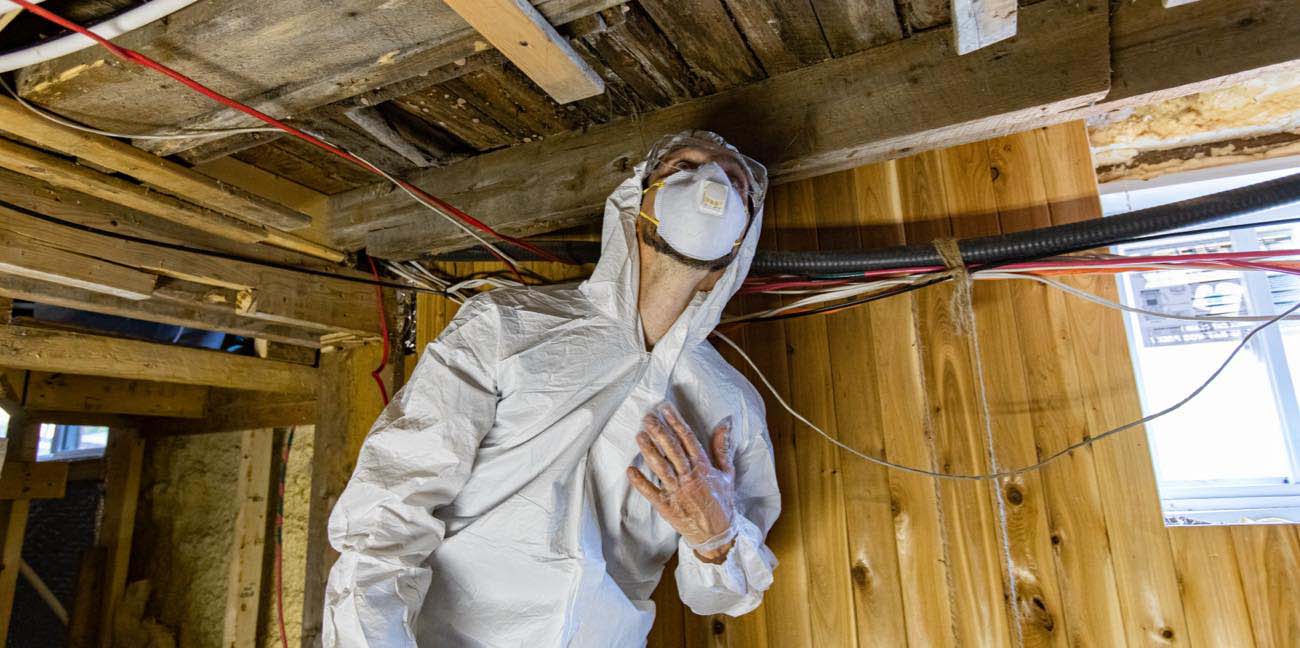Why Fall Raises Mold Risk
Cooler nights and closed buildings change indoor humidity patterns. When windows and doors stay shut and heating systems begin cycling, previously damp areas can develop condensation. That moisture, combined with leftover summer leaks or poor drainage, creates ideal conditions for mold to grow where it may go unnoticed.
We see the same pattern across commercial buildings: crawlspaces, roof assemblies, and junctions between old and new construction are common trouble spots. Identifying these areas before they worsen reduces the scope of work and the downtime for your operations.

What Mold Testing Involves
Testing tells us whether growth is active, what species are present, and how widespread contamination might be. We start with a visual inspection and moisture mapping. Where indicated, we collect targeted samples such as surface swabs, tape lifts, or air samples. We then send them to an accredited lab. Lab results tell us species and spore concentrations, which guide whether we recommend monitoring, containment, or full remediation.
We treat testing as part of a broader risk assessment, not an isolated checkbox.
How We Conduct Fort Wayne Mold Inspections
Below is a look at our mold damage restoration process for inspections:
- We start by interviewing facility staff about odors, leaks, and past issues.
- We use infrared cameras and moisture meters to detect hidden dampness.
- We collect samples where they provide the best diagnostic value and avoid unnecessary testing.
We keep disruption to a minimum and make sure building managers understand findings in plain language. When lab results return, we review them with stakeholders and outline options based on risk and building use.
When Should I Schedule Mold Testing?
Schedule testing after any water event, during seasonal transitions, or when occupants report health symptoms such as persistent allergy-like reactions. For high-risk sites, set routine inspections annually.

When Testing Indicates Remediation
Testing shapes the scope of work. When results confirm active growth, we move from diagnosis to action with a controlled remediation plan.
Our typical remediation steps:
- Contain the affected area to prevent cross-contamination.
- Remove unsalvageable materials safely.
- Clean and HEPA-vacuum salvageable surfaces.
- Apply approved antimicrobial treatments where appropriate.
- Dry and repair the moisture source.
- Conduct clearance testing to validate results.
We follow industry standards and document each step to support insurance claims and regulatory reviews.
Can Mold Return After Remediation?
Yes, if the underlying moisture source is not fixed. That’s why we pair remediation with building repairs and follow-up verification testing to confirm long-term success.
Why Professional Testing Reduces Long-Term Costs
Without testing, you risk overworking areas that are fine or missing active contamination. Professional testing gives a focused remediation plan, which limits material removal and shortens project timelines. That targeted approach lowers repair costs and gets your spaces back in service faster.
Building Science Approach To Prevent Recurrence
We treat mold as a symptom of building performance issues. Our inspections look for drainage failures, roof penetrations, HVAC imbalances, and plumbing leaks. Fixing those issues alongside remediation is essential to prevent recurrence.
We collaborate with contractors and property teams to ensure repairs align with remediation work, and we suggest monitoring strategies where appropriate.
Prioritizing Multiple Properties Efficiently
If you manage several sites, prioritize testing using a tiered system:
- Tier 1: Immediate testing at locations with known water events or occupant complaints.
- Tier 2: Inspections for aging roofs, basements, or buildings with historic issues.
- Tier 3: Preventive sampling at lower-risk sites to establish baselines.
This approach focuses resources where they matter most and creates a repeatable inspection schedule.

Industry Specific Considerations
Not all buildings tolerate the same level of risk. Healthcare, education, and food service facilities need rapid response, strict documentation, and clearance testing to meet regulatory expectations. We scale our protocols to match the facility type and compliance requirements.
Mold Remediation Fort Wayne
Fall is the right time to test. Early detection reduces health risks, limits repair scope, and preserves asset value. If you suspect an issue or want a proactive inspection, contact us through our submission form or call our office to schedule an assessment.



